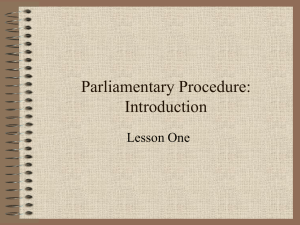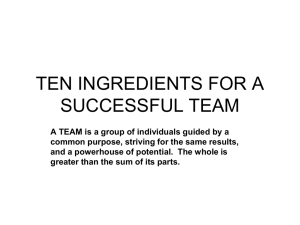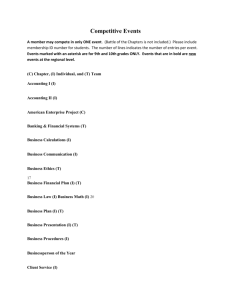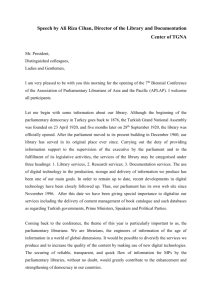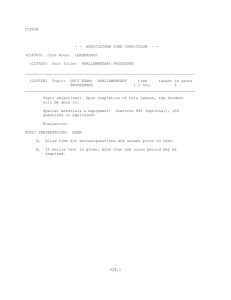CLF521
advertisement
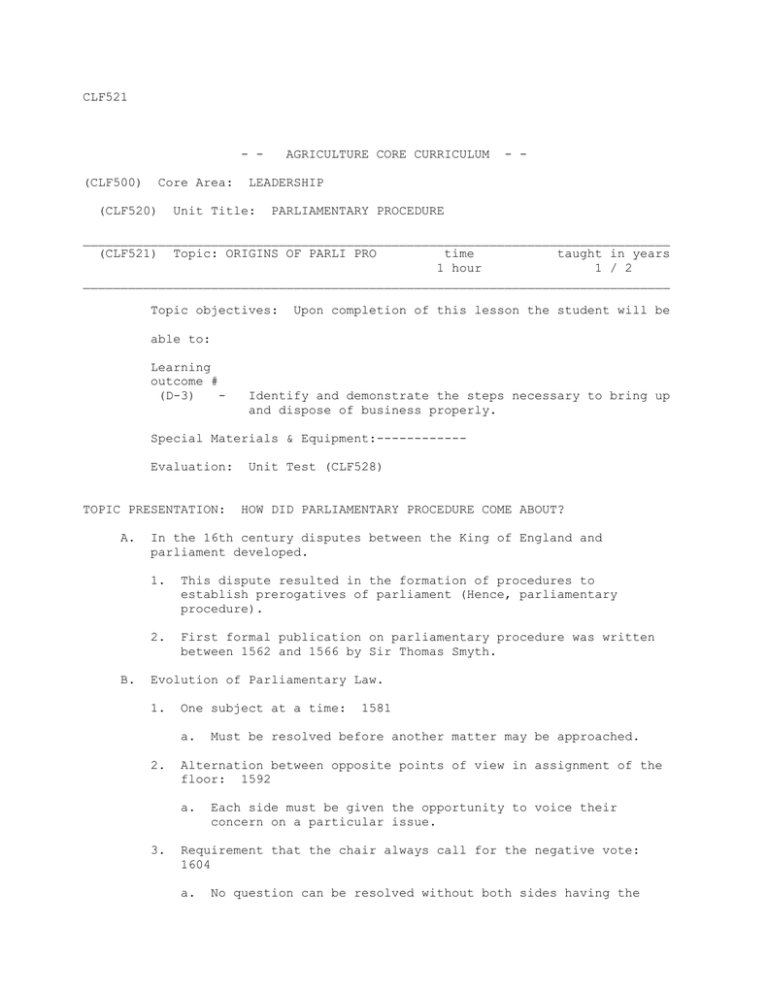
CLF521 - (CLF500) Core Area: (CLF520) AGRICULTURE CORE CURRICULUM - - LEADERSHIP Unit Title: PARLIAMENTARY PROCEDURE ______________________________________________________________________________ (CLF521) Topic: ORIGINS OF PARLI PRO time taught in years 1 hour 1 / 2 ______________________________________________________________________________ Topic objectives: Upon completion of this lesson the student will be able to: Learning outcome # (D-3) - Identify and demonstrate the steps necessary to bring up and dispose of business properly. Special Materials & Equipment:-----------Evaluation: TOPIC PRESENTATION: A. B. Unit Test (CLF528) HOW DID PARLIAMENTARY PROCEDURE COME ABOUT? In the 16th century disputes between the King of England and parliament developed. 1. This dispute resulted in the formation of procedures to establish prerogatives of parliament (Hence, parliamentary procedure). 2. First formal publication on parliamentary procedure was written between 1562 and 1566 by Sir Thomas Smyth. Evolution of Parliamentary Law. 1. One subject at a time: a. 2. Must be resolved before another matter may be approached. Alternation between opposite points of view in assignment of the floor: 1592 a. 3. 1581 Each side must be given the opportunity to voice their concern on a particular issue. Requirement that the chair always call for the negative vote: 1604 a. No question can be resolved without both sides having the opportunity to vote their concern. 4. Decorum and avoidance of personalities in debate: a. 5. 1604 Participants in floor debate should not engage in personalities which disrupts the transaction of business. Confinement of debate to the merits of the pending question: 1610 _________________________________________________________________ ACTIVITY: Lead a class discussion on the positive results of using parliamentary law to conduct a business meeting. _________________________________________________________________ C. Parliamentary Law - 'rules of order' 1. D. Refers to written rules of parliamentary procedure formally adopted by an assembly or an organization. Such rules relate to the orderly transaction of business in meetings and to the duties of officers. The conduct of business 1. Must have a quorum of members. a. E. A quorum is the minimum number of members who must be present at an assembly for business to be legally transacted. 1. Quorum protects against unrepresentation by a few. 2. Quorum is considered a majority of the membership (50% + 1). Pattern of Formality 1. The presiding officer of a meeting must always be impartial. a. Presiding officer is referred to as: 1. 2. 3. b. Chairman speaks of himself only in 3rd person. 1. 2. 3. F. Mr. President Mr. Moderator Mr. Chairman "The chair rules ..." "The chair will entertain a motion" A good chairman never says "I" Means by which business is brought before the Assembly 1. Motions introduce items of business. 2. Chair refers to people in the assembly as either members or delegates. G. Obtaining and Assigning the Floor 1. First to make a motion is entitled to first rights to debate. 2. If the maker of a motion claims the floor and has not spoken, he is entitled to be recognized. 3. No one is entitled to the floor a second time on the same motion if other members have not spoken on the motion and desire to. 4. Chairman should alternate floor debate between those favoring and opposing the motion.
